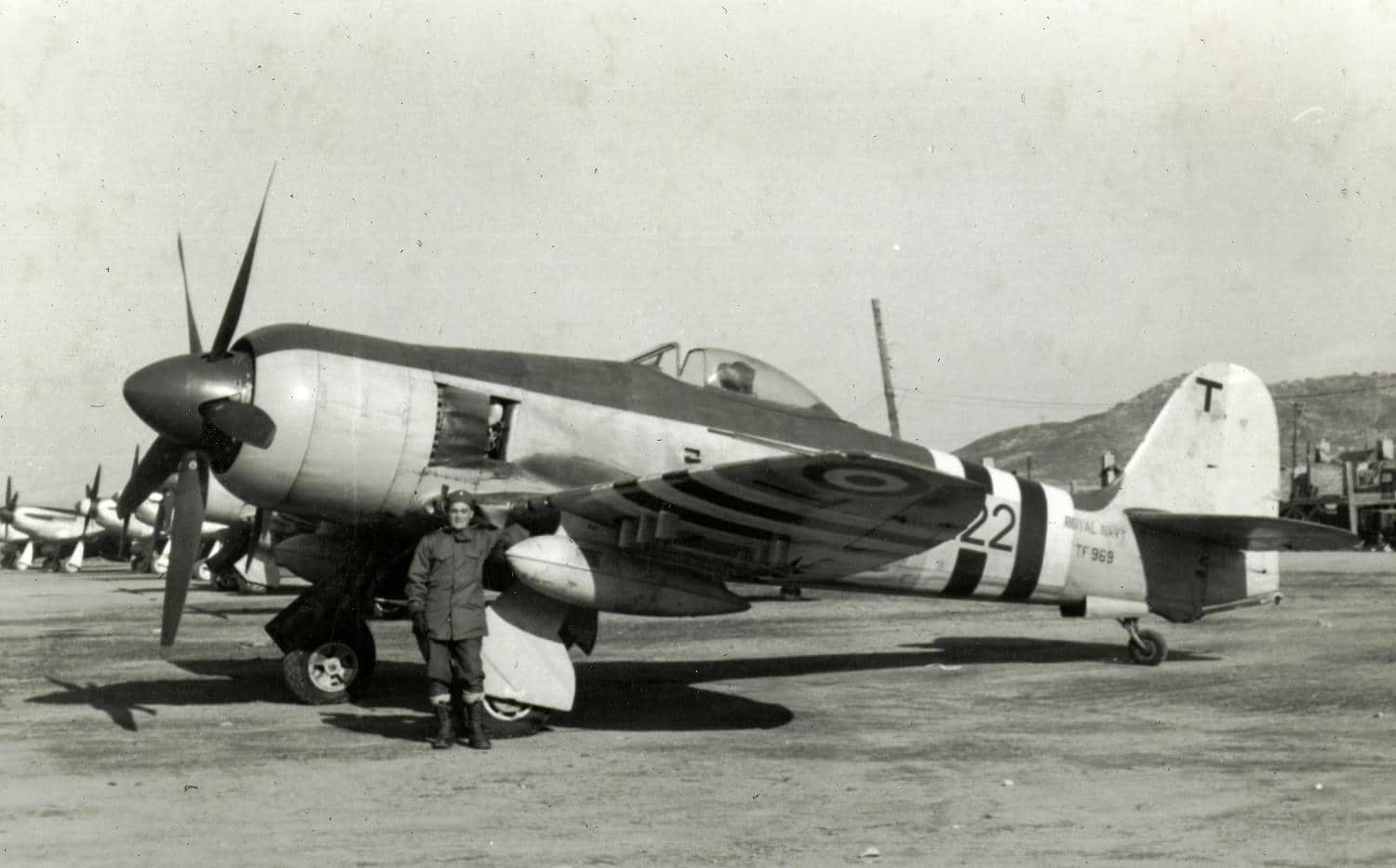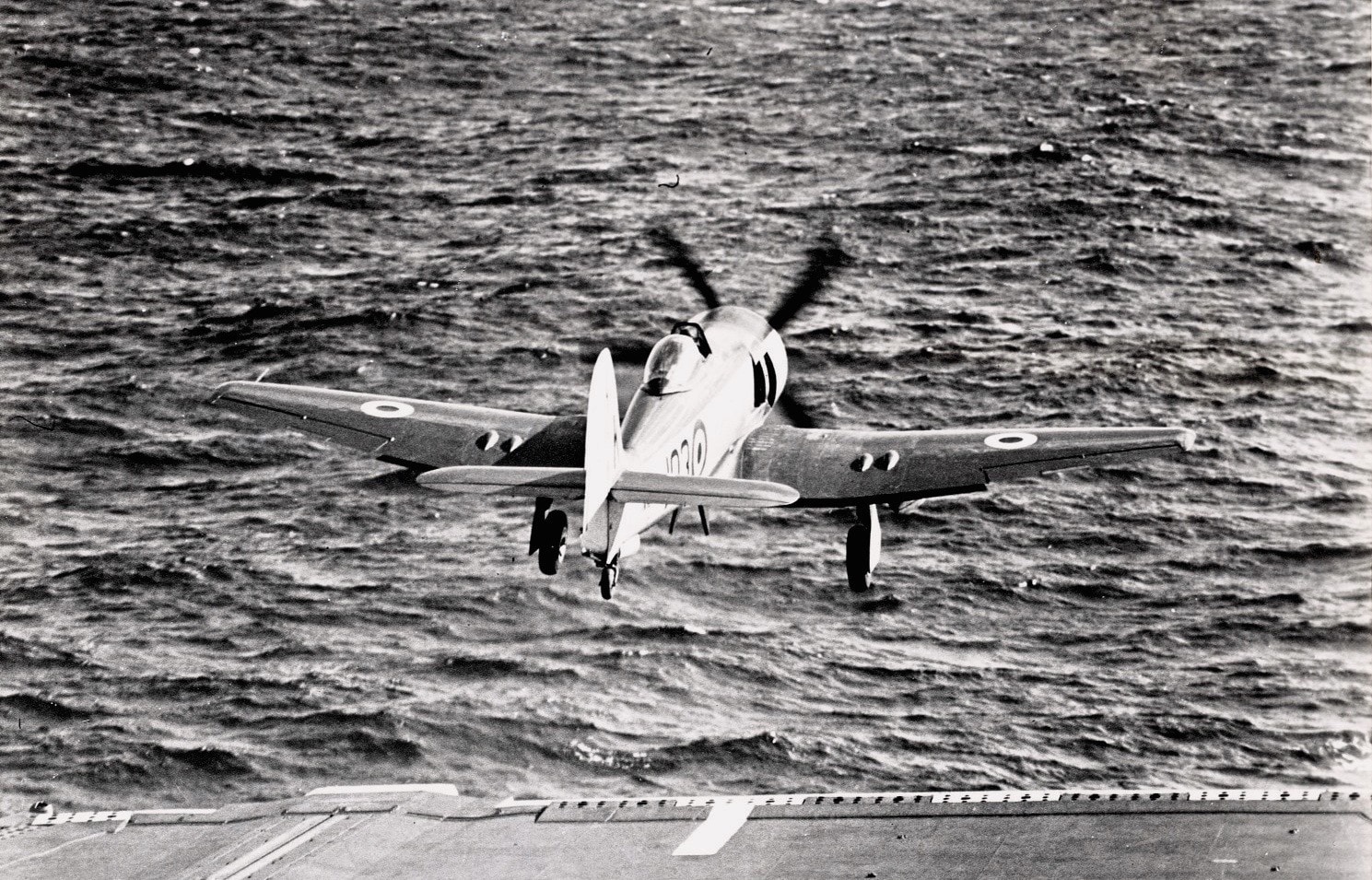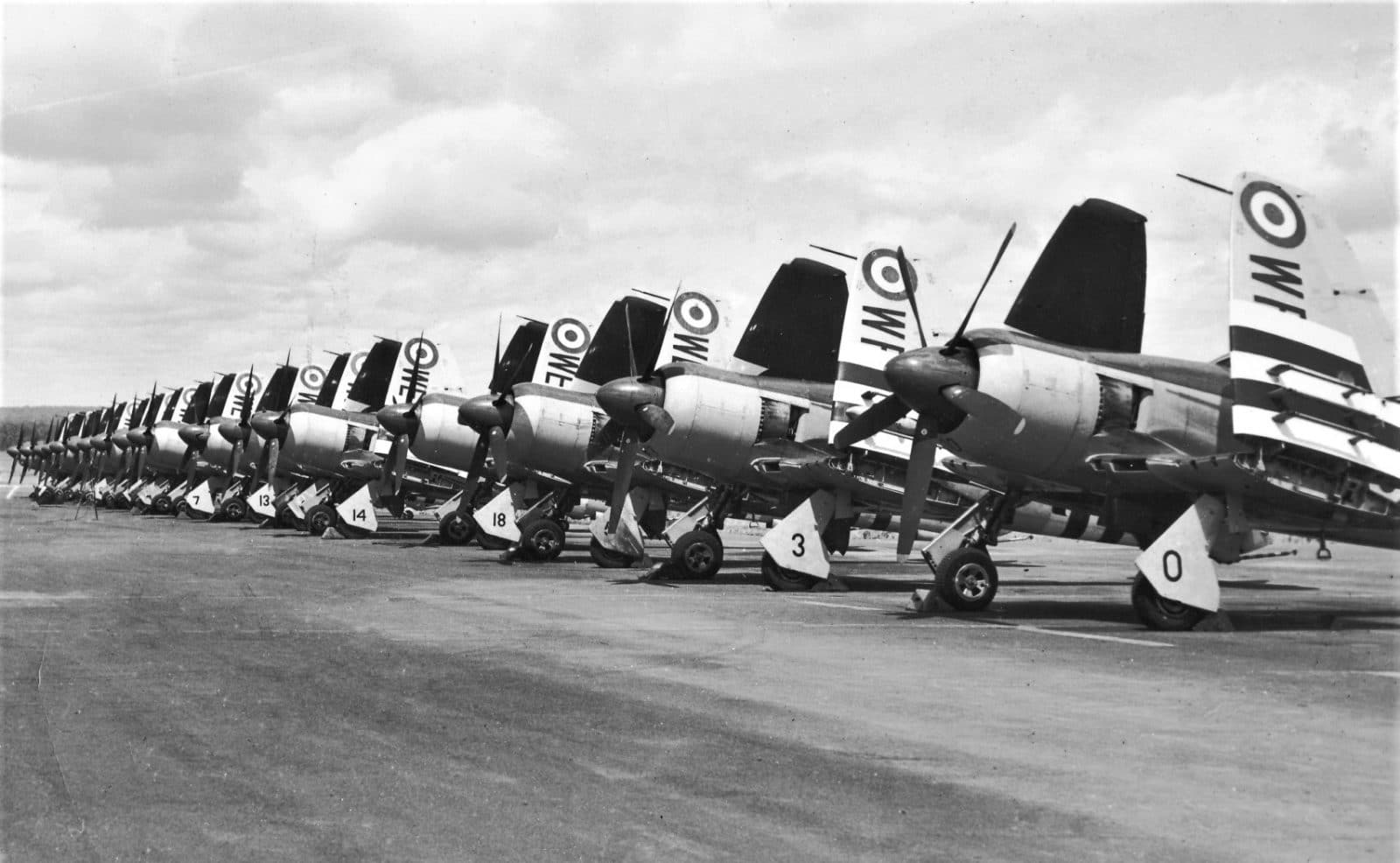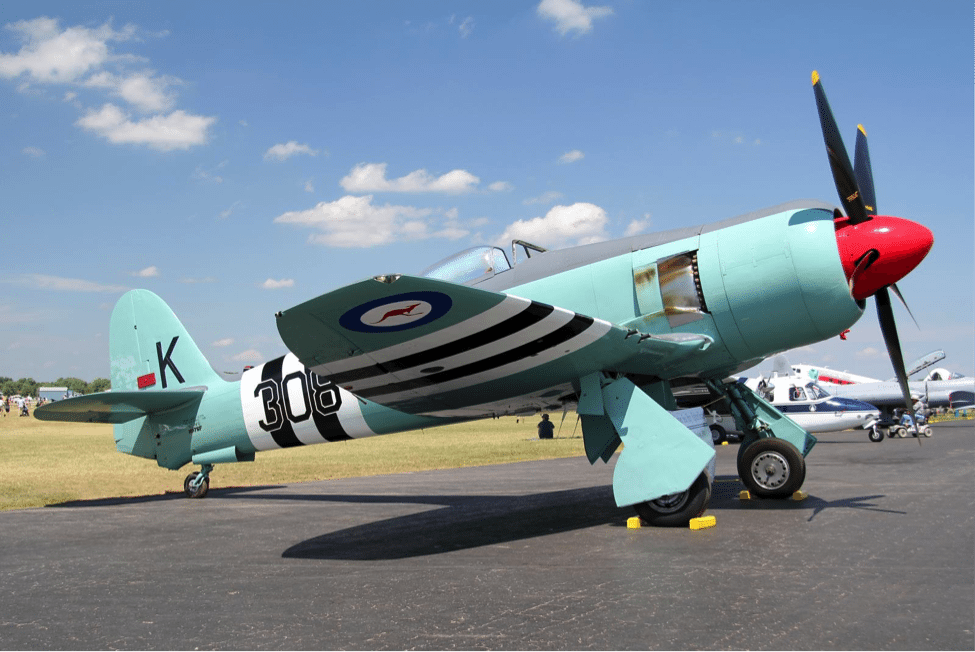To War in Korea
Sea Furies were dispatched to Korea following the outbreak of the Korean War on June 25th 1950 as part of the British Commonwealth Forces Korea, which was Britain’s contribution to the United Nations’ multi-national task force. Sea Furies performed primarily ground attack missions throughout the Korean War. Operating from the Royal Navy light fleet carriers HMS Glory, HMS Theseus, HMS Ocean, and the Australian carrier HMAS Sydney, Sea Furies were assigned many roles and missions.

Getting a Boost
The first Sea Furies arrived in-theatre with 807 Squadron aboard HMS Theseus, which relieved HMS Triumph in October of 1950. Operations on Theseus were relentless. The Sea Fury FB 11s of 807 Squadron flew a total of 264 combat sorties during October alone. After issues with the Theseus’ catapult were discovered but unable to repair them expediently before returning to the war, Sea Furies were launched using Rocket-Assisted Take Off Gear (RATOG) bottles affixed to their fuselages to get off the carrier deck.

Disrupting Travel Plans
In December of 1950, Sea Furies flew another 332 sorties targeting bridges, airfields, and railways in an effort to disrupt North Korean logistics. Sea Furies also performed a total of 3,900 aerial interceptions although none of the intercepted aircraft turned out to be hostile. During the winter of 1950 Sea Furies again displayed their versatility by working as spotter aircraft for UN artillery around Inchon, Wonsan, and Songiin.

The MiG
The first Chinese MiG-15 fighters began to appear in the contested skies above Korea in 1952. Flying primarily ground attack missions, the Sea Furies didn’t get many shots at the MiGs but on 9 August 1952, Lieutenant Peter “Hoagy” Carmichael of 802 Squadron, flying Sea Fury WJ232 from HMS Ocean, shot a MiG-15 down while escorting a group of Fairey Fireflies, making him one of only a few pilots to shoot down a jet while piloting a propeller driven aircraft.

Speed Demon
The Sea Fury was the final propeller-driven fighter to serve with the Royal Navy Fleet Air Arm. Capable of speeds reaching 462 miles per hour, it was one of the fastest production single piston-engine aircraft ever built.

Making a Classic Easier to Own
Today several Sea Furies are still operational in private ownership. The speed attainable in the basic design is undeniable and many airframes have been successfully converted for unlimited air racing. A large number of the currently flyable Sea Furies have been given a power plant update, receiving a lower-maintenance Pratt & Whitney R-2800 or even larger and more powerful radial engine, and a four bladed propeller in place of the original sleeve-valved Bristol Centaurus engine and five bladed prop.

That Sound and the Smoke
This writer’s first look at a Sea Fury was during Experimental Aircraft Association Fly-Ins in Oshkosh Wisconsin during the 1970s. A pilot named Frank Sanders mounted smoke generators under the wingtips of his Royal Navy Sea Fury and then took off and performed a very impressive aerobatic routine, performing loops, precision multi-point rolls, and high-speed passes. The generated smoke trails would loop, curl, and twist in the vortexes formed by his slipstream. The really impressive thing about the Sea Fury is the sound of it. When a Sea Fury performs a high speed pass at low altitude, the airplane sounds almost more like a jet than a piston engine fighter until it’s past you. Have a listen.
[youtube id=”M6W1Ge7rCyg” width=”800″ height=”454″ position=”left”]
